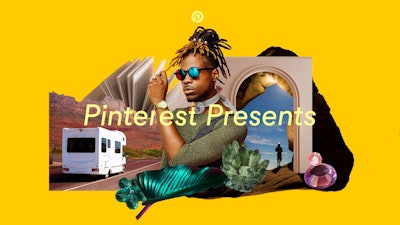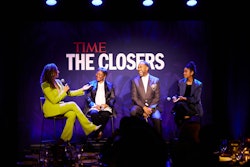
 Seán DoylePhoto: Courtesy of Pinterest
Seán DoylePhoto: Courtesy of Pinterest
1. Inspiration starts with inclusion.
Such a big part of an event is inspiring your audience to take action, whether that’s inspiring attendees to adopt a new product or way of thinking, or influencing their behavior in some way. As the world’s inspiration-to-realization platform, at Pinterest, we’ve learned a lot about what it takes to really inspire people to take action. One of the key things to know is that it’s difficult to feel inspired if you can’t see yourself represented, or if everyone looks and sounds the same.Think beyond gender and ethnicity when programming speakers at your event. For a truly inclusive lineup, there’s more to consider and more that’s expected from attendees—so ask yourself if you’re representing voices from other communities too. Where possible, consider inviting speakers with different abilities and neurodiversity, and check whether you’re representing different age groups as well as people with different socioeconomic backgrounds.
Providing an event that features different viewpoints and cultures will be much more compelling for your audience and may even help you inspire a whole new group of people.
2. Diversity doesn’t just happen on the stage.
Creating an inclusive experience takes more than just including diverse representation within your speaker lineup. Consider the team creating and reviewing the content, as well as those building the production and shaping the promotional strategy, plus those welcoming guests and speakers on the event day. Ask yourself if the event team brings the diverse views, backgrounds and experience needed to create an event that’s attractive and inspiring to a diverse audience, rather than one that will attract and engage the same people from the same places.3. Plan for accessibility early.
The move to virtual and hybrid events provides a vast opportunity for us to reach wider audiences, including new attendees who may not have been able to travel or access our once exclusively in-person experiences. To ensure your experiences are as accessible to as many people as possible, always consider an option for attendees to join virtually, and plan your production schedule accordingly to accommodate accessibility features such as captioning as well as sign language—which can add up to a week to your post-production schedule, depending on the length and complexity of your content.4. Focus on inclusive communication.
Don’t forget to also consider accessibility and inclusion as you promote your event. Work with accessible color palettes and design standards when creating your promotional assets, and be sure to consider diverse representation within the photography and video used to promote your event. Promote the accessibility accommodations you’re making throughout the registration process to let guests know what to expect, and consider asking attendees whether they have any additional accessibility needs so you can make accommodations in time.5. Assess your plans with outside help.
Look for outside guidance when planning the accessibility and inclusivity of your event. You could consider working with an independent consultant, or think about whether there are employee community groups within your organization that might be able to offer viewpoints from under-represented groups.There are also some great, free resources available from the Diversity & Inclusion at Conferences & Events Charter (DICE) to guide you through some specific considerations as you program and plan your event. DICE offers a free online assessment to help you understand how your event measures up to the charter. They’ll even accredit and recommend your event if you achieve a high enough score in your efforts across three key areas: participation and lineup, content and theme, and attendees and marketing. Achieving external accreditation is a great way to demonstrate to your audience that you’re taking diversity and inclusion seriously and that your event is open to all.



















